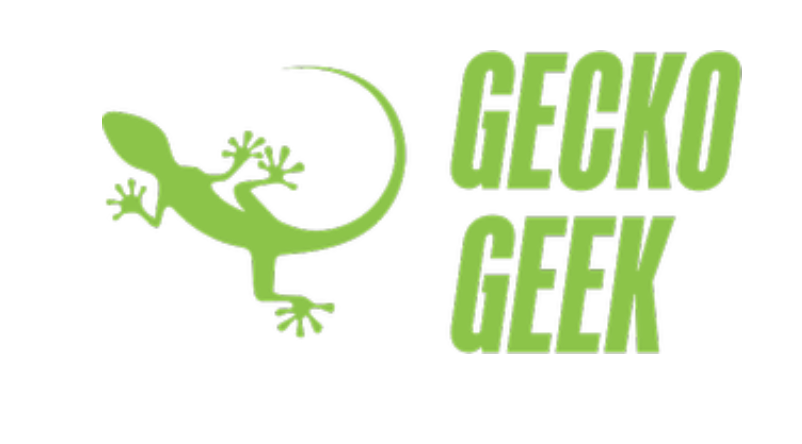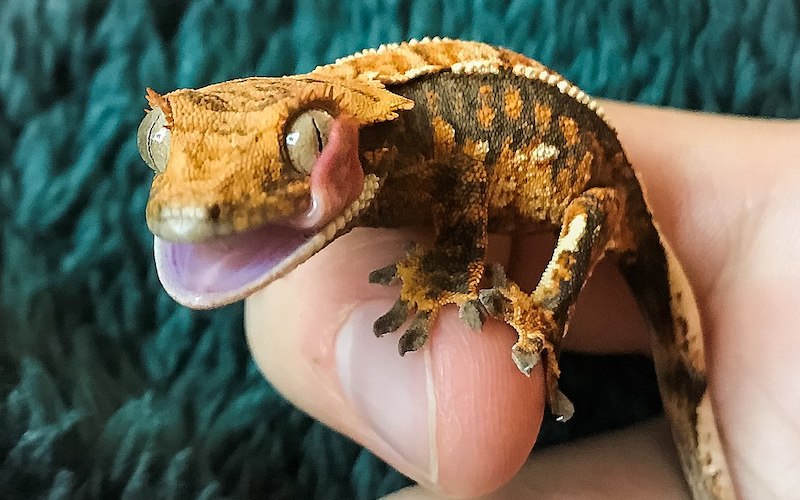How do you handle a crested gecko? That’s a question I get asked quite often, and it’s not one of those easy answers like “hang on tight”. handling your crested geckos safely is an art, but i’m going to try to teach you some of my Crested Gecko Handling methods so that you can minimise the risks.
Why Crested Gecko Handling is important
First off, why should we handle our geckos at all? well, it’s the only way to know for sure what’s going on with them. A gecko that is acting lethargic or isn’t eating may be seriously ill and not show any outward signs of illness. Likewise, a gecko that is shedding unusually could have something wrong and should be looked at by a vet right away. in order to know if your gecko is healthy, it’s necessary to handle him or her at least a few times a week. some of the things that you can do by handling your geckos include:
- weight checks (especially for babies)
- examining for signs of illness or injury
- checking out new enclosures
- teaching them what your hands mean (see “handling for a kiss” below)
Giving them a positive association with you and your hands will make it easier to handle them when they’re older.
Handling newborns Crested Geckos
If your hatchling is still very small, then handling should be done carefully and only on occasion. going for extended periods of time with no handling can result in them having a lower activity level, and will make it more difficult to handle when they’re older. my rule is only to handle the babies once every few days at first. this helps keep stress levels down and makes it easier for everyone involved (including you!). As the baby grows, you can start handling them a bit more often, and you’ll be able to handle them for longer periods of time before they get stressed.
Make sure your gecko is warm enough first if it’s cool outside (75+ degrees fahrenheit). that way the crested will have better circulation and thus be less prone to injury from being handled. as long as your gecko is healthy, he or she will be able to recover from brief periods of stress. young geckos can bleed much easier than an adult and are especially prone to tail injury. holding the crested their proper size and weight: try not to handle the gecko by its tail if at all possible. a lot of people just grab the tail and dangle it, which can bend the tail vertebrae. if you hold your gecko its proper size (which is basically filling the hand behind their bodies), then your risk of tail injury will be minimal.
If there are multiples in a cage, i often take two of them at once so that they still feel secure in their territory. try to choose one that’s not fully grown, but not so small as to be injured by the bigger gecko.
If your hand is large enough, you can hold it around them so that most of the pressure will be on your fingers and they’ll have more space between the shell and their body.
If you need to hold them in a way that puts the shell against your skin, then just remember to be aware of where you’re putting your hands. if they get scared and jump, they could break off some of their tail spikes or worse. hand feeding: what i recommend is using your thumb as a “hook” on top of their heads (right where the neck meets the rest of their body), and your index finger on their spines. if you have a large hand, you can fit all 4 fingers on them, one behind the neck and one under each arm.
Hold them like this every time you feed them so that they get used to it being an okay feeling. this way when you hold them later they won’t be as frightened and will relax sooner.
If you have small hands, then just put your thumb on their head and either let the gecko do all the work moving around or help it out with your index finger by holding one of its arms. make sure not to grab onto any other parts of the gecko.
You can try lightly stroking their backs, but be prepared to let go if they move or show signs of stress. handling for a kiss: crested geckos will often lick you with their tongue if you hold them in a certain way. it’s believed that this is either to get your scent or to clean off your hand. many breeders have noticed that their crested geckos will actually try to lick their hands after handling if you do it the right way.
The trick is holding them with the proper grip, which is basically like cradling them in your hand with your fingers and thumb behind their head and around one of their arms.
If you have small hands, you can hold them by their neck. if your fingers are far enough behind the head then they won’t try to lick them instead of the front of their body. this is why i’m suggesting that people with large hands use the “hook” on top of their head hold as it’s much larger and easier to get behind their heads.
“handling” chart: this chart is for people who aren’t sure what level of handling is appropriate for their crested gecko. the first row (for small geckos) shows how to hold them while feeding. the second row (for medium geckos) shows extra ways you can comfort them. the third row (for large geckos) shows how you should hold them for a kiss and what your hands should be doing to make it easy for you to respond if they lick or bite at your skin.
- small gecko: none – tail feeding
- medium gecko: cradling in hand with 1 finger behind head and other on arm
- large gecko: cradling in hand with 2 fingers behind head and 2 on arms
(licking/biting) kisses: none – cradling in hand with one finger behind head, others on top of arm small – use both thumbs to “hook” around the neck and support weight of 1/2 head and body medium – use both hands to “hook” the neck and support 1/2 head and body.
If you enjoyed this article on Crested Gecko Handling then you might also like to read about:


4 thoughts on “Crested Gecko Handling”